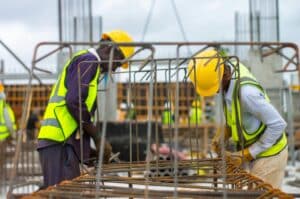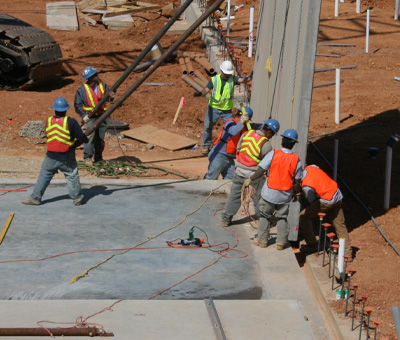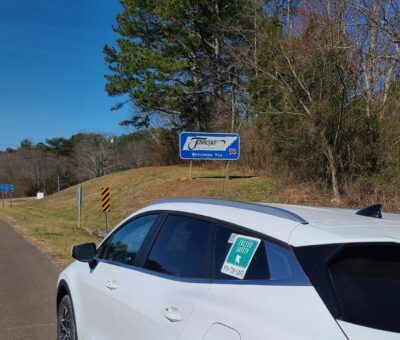Solar eclipses, those awe-inspiring celestial events, have fascinated humans for centuries. As we’ve evolved from building pyramids to erecting skyscrapers, the need to ensure safety during such phenomena, especially on construction sites, has become increasingly important. Solar eclipses pose unique challenges, the most significant being the risk of solar retinopathy from direct sun observation. This guide explores essential safety protocols to safeguard construction workers during solar eclipses, emphasizing the critical role of preparation and protection.
Understanding Solar Eclipses and Construction Safety
The intersection of solar eclipses and construction safety underscores a critical balance between marveling at natural wonders and ensuring workplace safety. Solar retinopathy, a condition resulting from the direct observation of the sun, stands out as a primary risk, highlighting the necessity of educating site workers about potential hazards and protective measures.
Crafting a Comprehensive Solar Eclipse Safety Policy
A well-defined solar eclipse safety policy is paramount for any construction company aiming to protect its workforce. Such a policy should cover several key areas:
- In-depth Training for Eclipse Safety: Prioritize educating employees and subcontractors about the risks of viewing the eclipse without proper eye protection. Emphasize the importance of adhering to safety protocols.
- Mandatory Personal Protective Equipment (PPE): Ensure that all personnel have access to ISO-certified solar viewing glasses. Make the use of such glasses mandatory during the eclipse to prevent eye damage.
- Schedule Adjustments During Eclipses: Modify work schedules or plan breaks around the eclipse’s peak. This approach ensures that workers can safely experience the event without the distraction of construction activities.
- Emergency Preparedness for Solar Eclipses: Establish clear emergency procedures. Ensure that first aid kits are easily accessible and that emergency response routes are well-defined.
- Ensuring Clear Communication and Compliance: Maintain open lines of communication with all team members. Timely information about the eclipse and a clear understanding of safety protocols are crucial.
Implementing and Enforcing the Safety Policy
The effectiveness of a solar eclipse safety policy lies in its implementation and enforcement. Leadership plays a critical role in fostering a culture of safety and ensuring compliance. Clear consequences for non-compliance, coupled with continuous monitoring and improvement of safety practices, are essential.
Safety Protocols for Solar Eclipses: A Case Study
Consider the case of Exceed Safety, a company that specializes in guiding construction firms through the development and enforcement of safety policies. Our approach to solar eclipse safety combines customized strategy development with professional guidance, illustrating the benefits of expert involvement in crafting and implementing safety protocols.
Conclusion: Emphasizing Safety and Preparation
The importance of preparation and safety during solar eclipses cannot be overstated. By implementing detailed safety policies that address training, PPE, schedule adjustments, emergency preparedness, and compliance, construction companies can protect their workers from potential risks. Such efforts not only ensure safety but also reflect a company’s commitment to its employees’ well-being.
FAQs on Solar Eclipse Safety for Construction Sites
What are the primary risks of solar eclipses on construction sites? Improper direct observation of the sun, leading to solar retinopathy, is the primary risk, alongside potential distractions that could result in accidents.
Why is in-depth training crucial for construction workers before a solar eclipse? Training raises awareness about the hazards of solar eclipses and the importance of following established safety protocols.
What types of Personal Protective Equipment are necessary during a solar eclipse? Certified solar viewing glasses are essential to protect against eye damage from direct sun observation.
How should work schedules be adjusted during a solar eclipse? Schedules should be modified to allow breaks during the eclipse’s peak, enabling safe viewing experiences for workers.
What emergency preparedness measures should be in place for solar eclipses? Clear emergency procedures, accessible first aid kits, and defined emergency response routes are critical.
How can construction companies ensure compliance with solar eclipse safety protocols? By maintaining open communication, enforcing policies through leadership, and setting clear consequences for non-compliance.
Building Safety from the Start with Prevention Through Design
In workplace safety, the best results come from stopping hazards before they ever reach employees. While training, procedures, and personal protective equipment (PPE) are important, the most effective approach is to design hazards out of the workplace from the beginning. This approach is known as Prevention through Design (PtD). What is Prevention through Design? Prevention…
Continue Reading Building Safety from the Start with Prevention Through Design
Emergency Preparedness: Staying Ready
Whether a misstep causes a fall or a natural disaster causes an evacuation, emergencies happen. Emergency preparedness and response can mean the difference in avoiding an injury or ending with a fatality. Emergencies come with little to no warning. While we may think these are extreme situations that will “never” happen to us, the reality…
Continuous Improvement and Immersive Training in Action
Construction is a dangerous business. Risks are constant, standards shift, and complacency can be deadly. For Jennifer Lastra, a U.S. Navy veteran and current CEO of 360 Immersive, corporate-style training falls far short. True safety begins with continuous improvement, supported by real engagement on the job. Training Should Go Beyond a Click-Through Box “Corporate training…
Continue Reading Continuous Improvement and Immersive Training in Action











